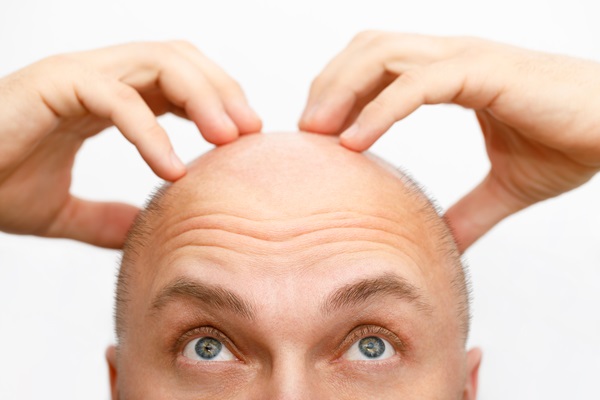Hair Transplant Procedure Options

A hair transplant is a surgery done to transfer hair from fuller areas to parts with little or no hair. The procedure has existed since the 1950s, but the methods have improved over the years. Many people who undergo the procedure can once again have fuller hair to reverse hair thinning and balding. Hair transplant surgery can make you more confident about your looks.
An overview of the hair transplant procedure
The procedure starts with an initial consultation with the doctor to discuss what patients can generally expect from the surgery.
The surgeon will clean the scalp and inject a numbing medication into the back of the head. The doctor may opt for any of the transplant techniques, such as follicular unit strip surgery (FUSS) or follicular unit extraction (FUE).
FUSS
With FUSS, the doctor will take a six to 10-inch strip of skin from the back of the head and then seal the scalp off. The area will be covered by the surrounding hair. Afterward, the surgeon and the medical team will separate the strip of extracted scalp into 500 to 2,000 small grafts, each with one or a few hair strands. The amount or type of graft used is based on the type of hair, color, quality, and size of the area to be treated.
FUE
For the FUE procedure, the medical team will shave the back of the scalp. Afterward, the surgeon will extract the hair follicles individually. That part will likely heal with tiny dots but will be covered by the surrounding hair.
At this stage, the two procedures are similar. After preparing the grafts, the surgeon will clean and numb the area to be treated, make incisions or holes using a needle or scalpel, and carefully insert each graft into the holes. Other members of the team will help plant the grafts.
Depending on the extent of the transplant, the entire process may take between four to eight hours. The patient might require another procedure eventually if hair loss continues or if they want fuller hair.
Recovery
After the surgery, the scalp will feel sore and tender. The surgeon will recommend pain meds for the pain and to apply bandages over the scalp for a day or two. The patient may also need to take antibiotics or an anti-inflammatory drug for some days. Many patients can resume their regular routine two to five days after the surgery.
After two or three weeks, the hair transplants will shed off, and new growth will start within a few weeks. Most patients notice significant hair growth six to nine months after surgery. Some physicians recommend hair-growing medication minoxidil to boost hair growth after a hair transplant.
Risks
The hair transplant procedure has its risks, such as bleeding and infection. Scarring and strange-looking new hair growth may also occur. When the new hair starts to grow, some patients may experience inflammation or hair follicle infection, called folliculitis. The surgeon will recommend antibiotics and compresses to treat the issue. Shock loss might also occur, where some original hair might be lost where the new strands are forming. This is mostly temporary.
FAQs about hair transplant treatments
The following are common questions about hair transplants:
Is it painful to have a hair transplant?
Fortunately, getting a hair transplant typically does not hurt. While you may feel some pressure or movement sensations during the surgery, you should not experience any discomfort since the surgeon will have numbed the region of your head where they will be working.
However, as your body begins to repair and recuperate, you may feel some pain or discomfort around the incision locations, as is typical after any kind of surgery. Your healthcare staff will probably advise you on how to handle discomfort and how to lessen the likelihood of unwanted responses and side effects.
Is a hair transplant procedure worthwhile?
When other therapies, like minoxidil, have failed, a hair transplant is a viable choice for those who can afford it. While the risks of a hair transplant are minor in comparison to those of other operations, they are nonetheless there. The likelihood of significant hair regeneration is also contingent on a number of factors. However, you should discuss the pros and drawbacks of the operation with your doctor if it is something you are really considering.
The bottom line
If you and your doctor have discussed treatment options and you have tried and failed to see results with other conventional therapies for hair regeneration, you may want to consider a hair transplant. The doctor may recommend a transplant if they believe you are suitable and will benefit from the treatment.
Get more information here: http://dillonhair.com or call Dillon Hair Restoration at (847) 241-2132
Check out what others are saying about our services on Yelp: Hair Transplant in Schaumburg, IL.
Recent Posts
Hair loss can usher in mixed emotions and damper your self-esteem, whether or not you were expecting the day. Fortunately, hair plugs or grafts can provide patients with a full head of their natural hair. If thinning or balding is something you are experiencing right now, help is available at our Schaumburg office. First, review…
Hair thinning treatments are far more versatile than they get credit for. Our team works closely with each patient to determine the root cause of their thinning tresses and craft an effective treatment plan. Take a closer look at common causes of hair thinning and the various methods we can use to treat it.Many factors…
Hair loss can significantly impact people, affecting their self-confidence and interpersonal relationships. Fortunately, hair grafting, also known as hair transplantation, provides a viable option to restore the natural hairline. If you are still deciding whether to pursue a hair graft, here are three reasons to consider it.Unlike temporary solutions like wigs or hairpieces, a hair…
For those with wrinkled skin, Botox® injections can provide great relief. While it may be a natural sign of aging, the presence of wrinkles can be frustrating to some. Thanks to the scientific research and testing in the 1990s by several dermatologists, Botox® was approved in 2002 by the Food and Drug Administration for cosmetic…


